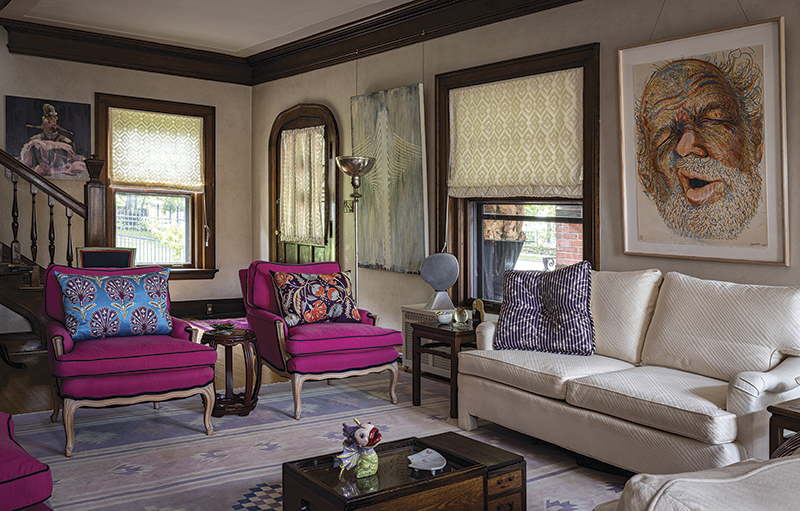
When you pull up to the 1916 Tudor home near the Nelson-Atkins Museum of Art, you get a hint of what’s to come.
Large contemporary sculptures on the lawn seem to move. Or do they?
This is the home that sculptor and activist Linda Lighton has shared with her multi-talented husband, Lynn Adkins, since the 1980s. It’s all about the art. Paintings, prints, sculptures, and ceramics by Lighton and friends have stories to tell, important issues to address.
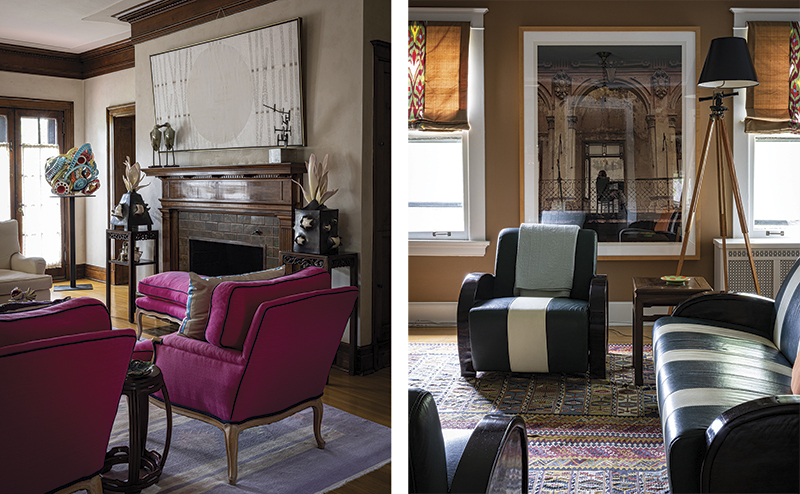
“We have a really visual family,” says Lighton. “I think in color. I dream in color. I smell in color.” Lighton, like many creative people, has that special kink in the brain known as synesthesia, where two senses combine.
She also likes movement, working clay in her nearby studio, and creating art that may look static, but gives the illusion of not staying still. You could swear that many of her sculptures, such as the sinuous ceramic vining branch on the dining room table, will grow an inch as soon as you look away. Or wander off. You can almost feel the prairie wind when you view her wall sculpture Ode to the Tallgrass Prairie at Gate A10 at the Kansas City airport.
“I try to reflect what is going on in the world. I like to play in clay and realize ideas about gun violence. Women’s issues. Sex and death. Desire,” she says.
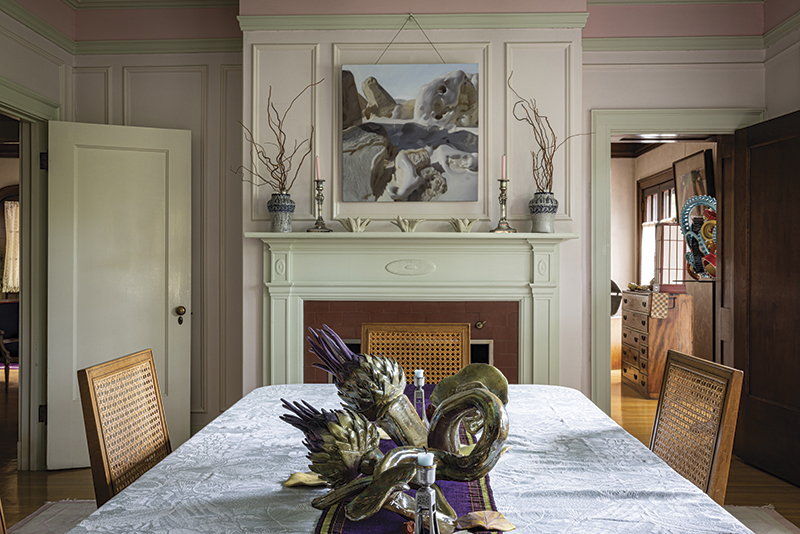
Lighton has many family pieces—furniture from her late mother, whose apartment at the Walnuts was featured in Architectural Digest. Long sewing tables from the former family business—Woolf Brothers department store—take on new purpose here and in her studio.
To blend it all in a harmonious way and to let the art “breathe,” she chose pale walls and trim (painted by Rachael Loomis). Pattern is minimal—throw pillows from Uzbekistan in the living room or dhurrie rugs underfoot in the living and dining rooms. Window treatments, for the 85 windows in the house, moderate the light with simple linen-like shades.
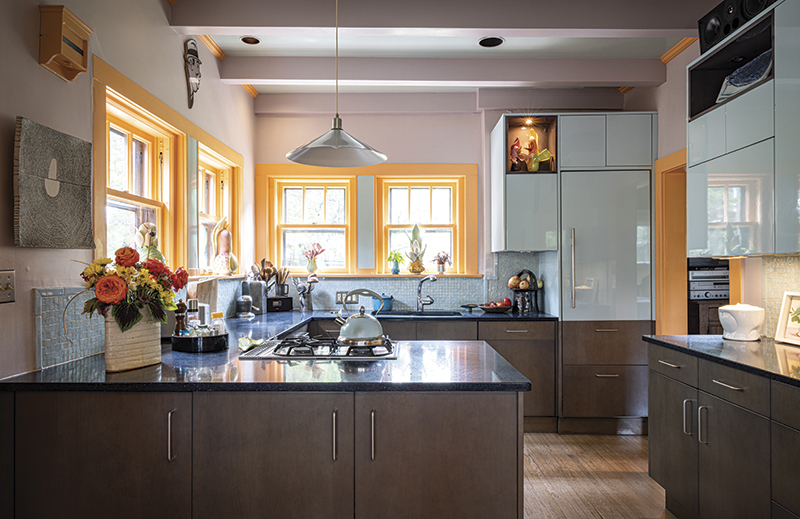
Lighton and Adkins make sure that their favorite pieces are front and center, easy to live with, happy to behold. In the living room, Hing Wah Jumping by Missouri State art professor emeritus Jerry Hatch, inspired by his wife, is one of Lighton’s favorites. She also loves Up Against It by Robert Arneson, a colorful print hanging behind the ivory sofa. Contemporary Noguchi lighting creates an airy feeling.
Adkins favors ceramic pieces, such as the Pueblo pots in the dining room. Also in the dining room is Cotton Candy Rose, a portrait of Lighton’s daughter, Rose Dergan—an art researcher at Gagosian Gallery in New York City—that was painted by her partner of 20 years, the artist Will Cotton. His work has been exhibited throughout the U.S. and Europe and reached an even wider audience with his Candyland design for Katy Perry’s video California Gurls. While Lighton signals “desire” with anatomical ceramic forms, Cotton paints candy, pastels, and bakery treats to evoke the same.
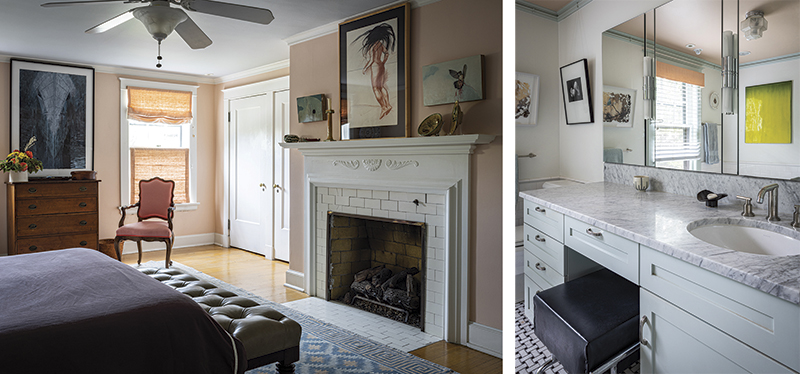
A large Tibetan painting on silk of the goddess Quan Yin that’s 700 years old belonged to Lighton’s paternal grandmother, who bought a Kansas City brothel in the 1930s and converted it into an art gallery and studio space.
Randy Sisk of Kitchens by Kleweno updated the kitchen several years ago with a pale sea-blue tile backsplash, Silestone counters, and lacquered cabinets, all set off with Creamsicle-hued trim. Adkins likes being greeted by the “green sprouting floral piece” on the windowsill every morning.
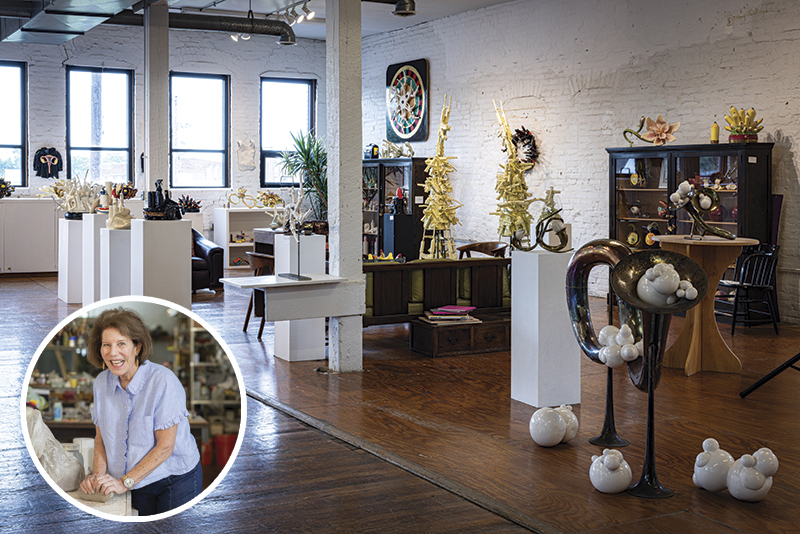
Upstairs, the generous primary bedroom, painted a pale flesh color, gives onto a dressing room, once the sleeping porch in the days before air conditioning. The primary bath, with pale blue cabinetry by Schloegel Design Remodel, features a newer black-and-white basketweave tile floor, referencing the age of the house.
Currently, Lighton and her daughter are working on a major retrospective of the artist’s work to be exhibited at the Nerman Museum of Contemporary Art in the fall of 2025. She also sponsors the Lighton International Artists Exchange Program, funding travel for artists around the world.
To see more of Lighton’s work, visit her website.
The It List
Kitchen Design
Kitchens by Kleweno
Renovation
Schloegel Design Remodel
Interior Painting
Loomis Interiors
loomisinteriors@yahoo.com



